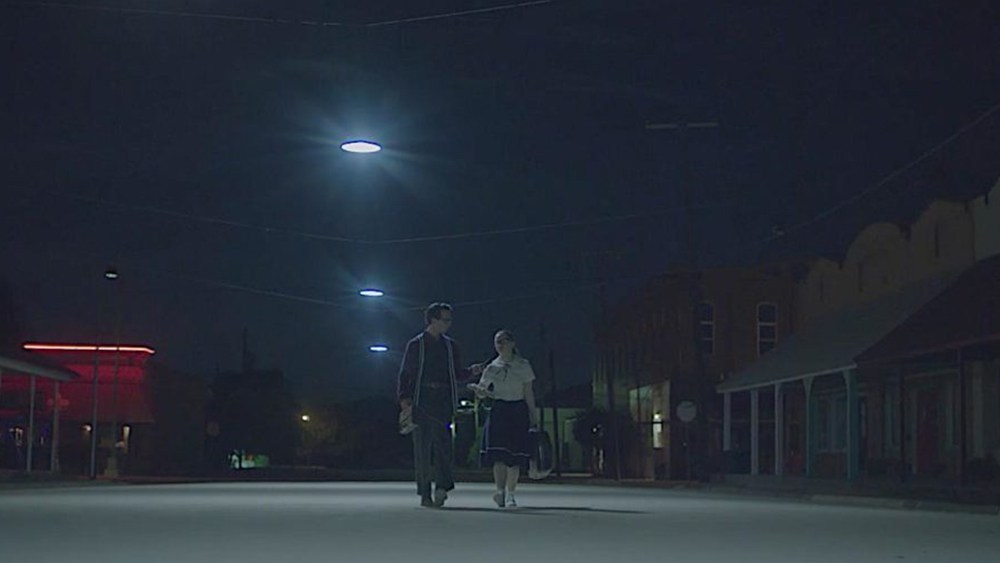The Vast of Night opens with an extremely clever conceit. The camera slowly zooms in on an old, 1950’s television set as it plays an episode of a Twilight Zone-style anthology show where the newest “episode” turns out to be the film itself. As the camera gets closer to the TV, the black and white color grading fades away and the scene vibrantly comes to life. It’s among the many clever tricks that Andrew Patterson has up his sleeve that brings James Montague and Craig W. Sanger’s script to life.
As the TV show’s credits give way to the “episode,” we’re introduced to a small southwest town’s high school gymnasium where the majority of the town is watching a basketball game. Radio host Everett (Jake Horowitz) is there helping the local broadcast team set up before leaving with his switchboard operator Fay (Sierra McCormick) to go air on their show. During the broadcast, Fay hears a strange audio frequency that causes some concern and they receive mysterious calls trying to explain it. Fay and Everett spend the night trying to figure out what caused the sound, be it random feedback, the Soviets, or even something more “out there.”
The first thing that jumps out about The Vast of Night is how absolutely gorgeous it is. Patterson is doing incredible work with a fairly minimal budget, and cinematographer M.I. Littin-Menz captures some incredible period production design with aplomb. The film’s lighting is the true star, as every location and every scene has a unique feel. A significant portion of the film is Fay in the switchboard room and Everett in the studio either on the phone with each other or on the phone with a mysterious, unseen caller and it’s always visually arresting.
There is camera movement in this film that, frankly, blew me away, particularly one particular long-shot where the camera goes from a dolly that pans around the gymnasium, moves around the court, switches to handheld to go down the stairs, cranes out the window and proceeds to track down the road to the radio station. A lot of films in this budget-range, particularly directorial debuts like this, overuse these kinds of camera tricks in order to show off, but that’s not what is happening here. Given how much of this film’s vibe is about the isolation Fay and Everett feel while trying to get to the bottom of this mysterious sound, that shot is a perfect encapsulation of that energy.

It’s a great piece of filmmaking, which Patterson uses to smartly give verve to a minimalist sci-fi screenplay that emphasizes dialogue and paranoia over visual action — the script often plays as if it were written to be a radio drama. This isn’t meant as a dig on Montague and Sanger’s script, which shrewdly captures the overwhelming fear and conspiratorial sense of the Cold War via the radio show setting. The characters we meet, whether it be a voice on the phone or an in-person interview, are never clearly portrayed as truthful or just disturbed. The Vast of Night slow-plays its hand and it works in the film’s favor, as this deliberate pacing lets Patterson play with the visual storytelling in inventive ways without losing the story’s mysterious backbone.
Patterson’s filmmaking alone would be enough to recommend The Vast of NIght, as it really is a thing to behold. That the film as a whole is as deserving of praise is even more reason to give this one a chance. It’s a film that knows how to build tension and the ending payoff is wonderfully realized. The Vast of Night is a gripping, anxious thriller that uses its 1950’s period setting to maximize the effect of the film’s sci-fi genre trappings.





